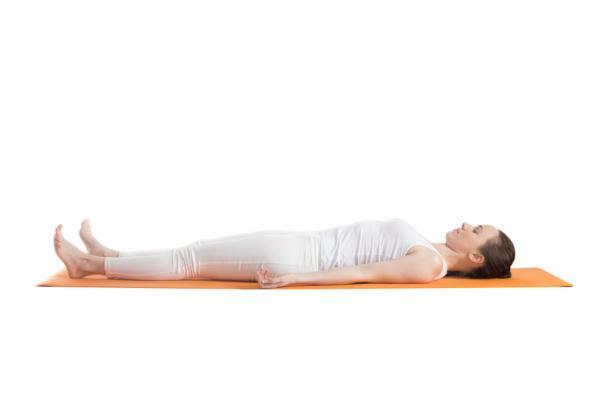
Edmund Jacobson is the creator of the relaxation method known as progressive relaxation. At the beginning of the century he devised a method of relaxation whose purpose was to bring about peace of mind by progressively suppressing all muscular tensions. This method aims to learn progressive relaxation of all parts of the body.
In this PsychologyOnline article, we explain in detail What is Jacobson's progressive muscle relaxation?
Index
- History of progressive relaxation
- The place to perform progressive muscle relaxation
- The position for progressive muscle relaxation
- The clothes
- The course of training
- Practical recommendations
- Contraindications
- Decision making in the application of relaxation
History of progressive relaxation.
"Jacobson [..]. He discovered that by systematically tensing and relaxing various muscle groups and learning to attend to and discriminate sensations resulting from tension and relaxation, a person may almost completely eliminate muscle contractions and experience a sensation of deep relaxation. The culmination of the studies was the Progressive Relaxation (1938), a theoretical description of his theory and procedures. Four years earlier "You must relax" had been written as a non-professional version of the same material. From 1936 through the 1960s, Jacobson continued his research at the Chicago Laboratory of Clinical Physiology. Since 1962, the basic relaxation procedure included fifteen muscle groups. Each group was treated in sessions ranging from one to nine hours a day, before continuing with the group. following, with a total of 56 systematic training sessions. "(D.A. Bernstein and T.D. Brokovec, page 13).
The number of hours proposed by Jacobson for progressive relaxation training is a serious limitation for the possibility of applying the technique.
It was Josep Wolpe he who adapted the technique as an element of counterconditioning and reduced it to six sessions of twenty minutes with two sessions of daily practice, at home, of fifteen minutes.
"Wolpe's procedures were similar to Jacobson's in terms of tensing and relaxing muscle groups to achieve deep relaxation. However, the therapist in this case directs all aspects of the procedure through verbal instructions presented during the training sessions. Wolpe's therapists used direct suggestion and even hypnotic procedures to facilitate awareness of bodily sensations "(D.A. Bernstein and T.D. Brokovec, p. 14).
The place to perform progressive muscle relaxation.
The best advice regarding where to practice is common sense. Thus, auditory and visual stimuli (little noise and little light) will be avoided as far as possible.
As we have exposed in the section dedicated to autogenic training; The conditions of the place where we carry out the practice have to meet some minimum requirements:
- Quiet atmosphere, without too much noise and away from possible disturbing external stimuli.
- Suitable temperature; the room must be of a moderate temperature (neither high nor low) to facilitate relaxation.
- Moderate light; it is important to keep the room in dim lighting.

The position for progressive muscle relaxation.
Likewise, that was proposed in the section on autogenic training, for the progressive relaxation training we can use different types of positions. Below we specify those described above.
- Lying on a bed or divan with your arms and legs slightly at an angle and away from your body.
- A comfortable armchair with arms; in this case it is convenient that we use supports for the neck and feet.
- Sitting on a chair or stool. In this case we will use the coachman position described for autogenic training.
The clothes.
In a previous session, the patient is advised that do not wear clothing that is too tight that may interfere with the training process or are a source of extra stress.
The subject of glasses, shoes, bras, contact lenses, etc. is important. All these issues should be discussed with the client and an agreement on how the procedure will be followed.
The course of training.
Starting from the early work of Jacobson and later of Wolpe, a whole range of variations on the original process began to be developed. This state of affairs became so complicated that each author developed their own relaxation system. This is easily verifiable since if we review any manual to the use of behavior modification we can observe a different relaxation method in each of them, although, yes, at least they all have a relationship parallel.
It is an attempt to solve this problem D.A. Bernstein and T.D. Brokovec in his book "Training in Progressive Relaxation" systematize a model of progressive relaxation to match research processes that use relaxation, from In this way the method would not vary from research to research, and in this way to establish a consensus on the method to use.
In any case, different models continue to be presented by different authors, and it is up to the professional to choose the training model that you like the most, although, as we have already said, the methods do not differ substantially from one other; There are authors who are more in favor of introducing suggestive elements in the process, others consider that these elements must be limited as much as possible, etc. In general, these types of nuances are not too important and basically the important thing is to get the person to relax.
Practical recommendations.
The following suggestions, taken from Goldfried and Davidson (1976) and collected by T. Carnwath and D. Miller (1989), have demonstrated its usefulness in clinical practice:
- Tell the patient that she is learning a new skill, in the same way that she might learn to drive or play sports. She has learned to be anxious and now she is learning to relax, although this takes time.
- You may have "strange" sensations, such as tingling or floating. These are positive signs that you are "letting go." Similarly, anxiety, due to an apparent increase in symptoms, such as heart rate or muscle tension, simply indicates increased physical awareness and not physical dysfunction resulting.
- Recommend that you "let things happen and" go with the process. "
- You should not be afraid of losing control, as you are free to let go at any time. He is responsible for the situation. Check your fear periodically. Using the analogy, for example, of riding a horse: basic control and balance are achieved by "loosening the muscles."
- Learning relaxation is not a pass or fail exam. Nor is stubborn effort desired. It is very possible that the effects take a long time to appear and this is normal (it takes a long time to strain!).
- You are free to move in the chair to find a comfortable position, although you should not make unnecessary or sudden body movements, nor should you talk to the therapist if it is not necessary.
- He can keep his eyes open initially if he feels more comfortable that way, although later he should try with his eyes closed.
- He could become much more sensitive to the sensations associated with the onset of anxiety and tension. These can be used as guidelines to intercept the start of them in the future.
According to these same authors, it can also be useful for help the patient get used to learning:
- Model the procedure, particularly in cases where tension and relaxation of muscle groups are combined with a respiratory rate. This will help clarify the exercise instructions and alleviate any embarrassment in adopting "weird" facial expressions or body postures.
- Encourage the patient to ask questions if he has doubts about any part of the process.
- Check if you find it uncomfortable to wear contact lenses with your eyes closed for long periods of time and, if so, allow them to be removed. You may also be advised to loosen your clothing or remove your shoes that are too tight.
- Give relaxation instructions in a warm, low, and gentle voice, even at a slower pace than normal. Take all the time you need.
- Observe the patient closely during the first session (s) to ensure that he is following the instructions correctly and that he is not cheating to her own detriment.
- Feedback. After sessions (or during sessions if appropriate), help the patient master the technique more quickly and effectively.
- Praise the patient for her efforts. It is not easy to let go after several years of stress, so praising and encouraging the patient in an appropriate way will reinforce his efforts and stimulate his motivation to persevere.

Contraindications.
At a general level of all the relaxation methods discussed so far and according to T. Carnwath and D. Miller (1989) relaxation may be contraindicated in some cases. Below we collect a table from the authors in which those cases in which the use of relaxation would not be advisable are specified.
Possible contraindications of some relaxation techniques:
- Bad childhood memories.
- Serious physical illnesses.
- Wounds and muscle strains.
- Recent operations.
- Suffocations before.
- The patient was on the verge of drowning.
- Fainting.
- Epileptic attacks.
- Use of important psychedelic drugs.
- Diabetes.
- Narcolepsy
- Psychiatric disorders or treatment.
- Hysterical or dissociative states.
- Particularly strict religious education.
- Witness very "distressing" accidents
- Emotional disorders
Decision making in the application of relaxation.
For the application of relaxation, two questions should be asked; the first would refer to is the use of relaxation appropriate for the problem presented by the client? and second, what type of relaxation do I have to use? To answer the first question we can go to table 1; this collects a decision tree for relaxation training. ,Following the different steps indicated in it, we can reach a good decision on whether or not to apply relaxation.
In reference to the second question, we can mention the research of Paul (1969) cited by Bernstein and Brokovec (1983) and in which, among other things, "compared the effectiveness of hypnosis, relaxation training and a self-relaxation control [..]. Results indicated that hypnotic suggestion and relaxation training decreased significantly the subjective tension and physiological arousal in a more effective way than the control procedure. However, relaxation training was more effective than hypnotic suggestion in producing general physiological reductions more rapidly and to reduce heart rate and stress muscular".
All in all, it is professional responsibility decide on one technique or another depending on the problem that the client presents and the domain that he has of each one of those presented here.

This article is merely informative, in Psychology-Online we do not have the power to make a diagnosis or recommend a treatment. We invite you to go to a psychologist to treat your particular case.
If you want to read more articles similar to Jacobson's Progressive Muscle Relaxation, we recommend that you enter our category of Meditation and relaxation.


